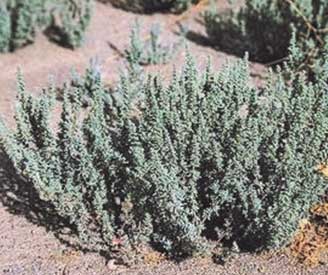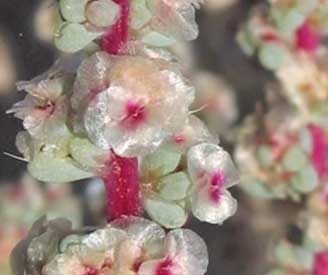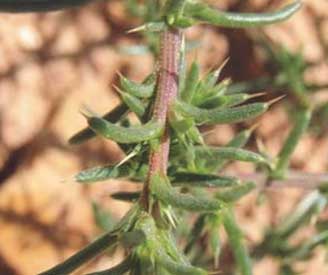Saltlover
Halogeton glomeratus
Description
Succulent, taproot can penetrate as deep as 20 in., with a radial spread of 18 in. Many main stems branch from the base of the plant and are low spreading. Leaves are small, fleshy, and spine tipped. Flowers inconspicuous in leaf axils and produce winged black and wingless brown seeds.
Habitat
Typical in disturbed sites in salt-desert shrubland and semiarid shrublands. Adapted to alkaline soils. Invades open or disturbed ground such as dry lakebeds, overgrazed rangeland, abandoned farms, railroad rights-of-way, along road shoulders, airstrips, and gravel pits.
Location in Nebraska
Found in only a couple of counties, mostly in Northwest Nebraska.
Pathway of Introduction and Spread
Animals capable of spreading large amounts of seed great distances; rapidly spread along roads by road equipment, Local spread is primarily by the wind—will break off at ground level when dry and tumble with the wind, scattering mature seeds.
Impacts
High in oxalates and is a serious health threat to grazing animals, especially sheep. May permanently change soil surfaces via salt pumping which impedes moisture infiltration and enhances evaporation.
Joseph M. DiTomaso, University of California–Davis, Bugwood.org
Clinton Shock, Oregon State University
Bonnie Million, National Park Service, Bugwood.org


